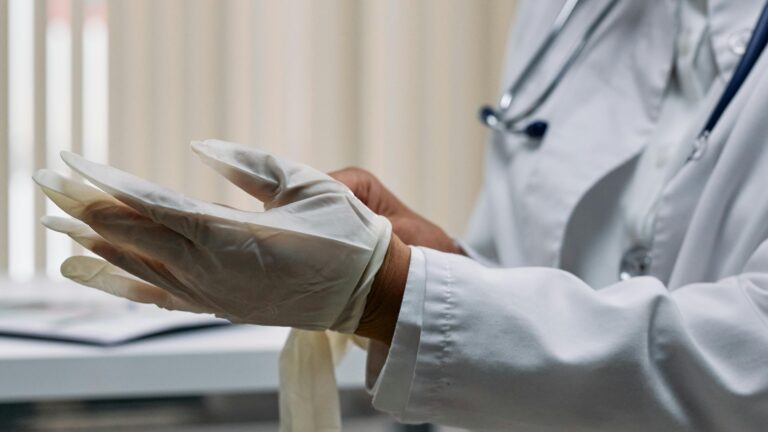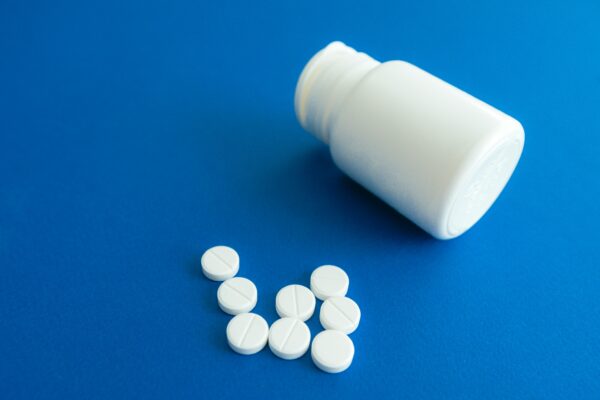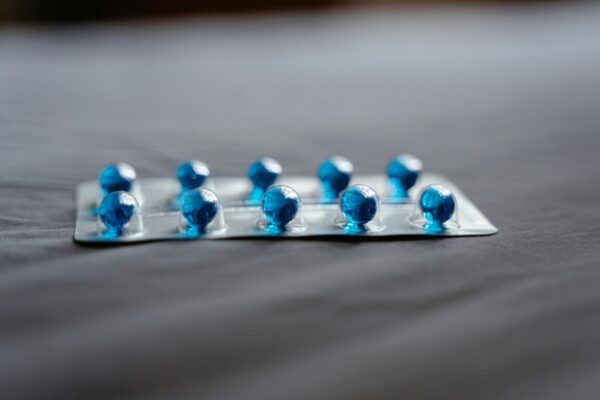Penis health is vital to overall male well-being, and awareness of common penis diseases can help prevent complications and ensure timely treatment. Below, we delve into the most prevalent conditions affecting the penis, their symptoms, causes, and treatments.
- 1. Peyronie’s Disease
- 2. Erectile Dysfunction (ED)
- 3. Balanitis
- 4. Phimosis and Paraphimosis
- 5. Penile Cancer
- 6. Priapism
- Penis Diseases Quick Reference Guide
- Conclusion
- Studies and Sources
- FAQs: Penis Diseases
- Question: What are the most common penis diseases?
- Question: What are the symptoms of Peyronie’s disease?
- Question: Can erectile dysfunction (ED) be a sign of other health issues?
- Question: How is balanitis treated?
- Question: What are the treatment options for phimosis?
- Question: How can penile cancer be prevented?
- Question: Is priapism a medical emergency?
1. Peyronie’s Disease
Peyronie’s Disease is a connective tissue disorder that results in the development of fibrous scar tissue inside the penis, leading to curved or painful erections. This condition can make sexual intercourse difficult or impossible for some men, severely impacting their quality of life.
Symptoms of Peyronie’s Disease
- A noticeable curve in the penis, particularly during an erection
- Erectile dysfunction (ED)
- Pain during erection or ejaculation
- A palpable lump or hardened area on the penis
- Shortening of the penis
Causes of Peyronie’s Disease
The exact cause of Peyronie’s Disease is not entirely understood, but it is thought to occur after an injury that causes internal bleeding in the penis. Other factors include:
- Genetic predisposition
- Aging, which leads to decreased elasticity in tissues
- Autoimmune responses
Treatment Options
Treatment ranges from non-invasive options to surgical interventions, depending on the severity. Common treatments include:
- Oral medications such as pentoxifylline or potassium para-aminobenzoate
- Penile injections to break down scar tissue
- Shockwave therapy to reduce pain and curvature
- Surgical options, including plaque incision or excision, and penile implants in severe cases
2. Erectile Dysfunction (ED)
Erectile dysfunction, or ED, is the inability to achieve or maintain an erection sufficient for sexual intercourse. While occasional problems with erections are not uncommon, consistent ED can be a sign of underlying health issues.
Symptoms of Erectile Dysfunction
- Trouble getting an erection
- Difficulty maintaining an erection during sexual activity
- Reduced sexual desire or libido
Causes of Erectile Dysfunction
ED can result from a variety of physical and psychological factors, including:
- Cardiovascular disease
- Diabetes
- Obesity
- High blood pressure
- Psychological factors like stress, anxiety, or depression
- Medications such as antidepressants or blood pressure medications
Treatment for Erectile Dysfunction
- Lifestyle changes, including weight loss, quitting smoking, and reducing alcohol intake
- Oral medications like sildenafil (Viagra), tadalafil (Cialis), and vardenafil (Levitra)
- Vacuum erection devices that increase blood flow to the penis
- Penile implants in cases where other treatments are ineffective
3. Balanitis
Balanitis is an inflammation of the foreskin or head of the penis. It primarily affects uncircumcised men and is caused by poor hygiene, infections, or allergies.
Symptoms of Balanitis
- Redness and swelling of the penis head
- Pain and discomfort
- Itching or irritation
- Foul-smelling discharge
Causes of Balanitis
- Poor hygiene leading to bacterial or fungal infections
- Sexually transmitted infections (STIs) like herpes or gonorrhea
- Allergic reactions to soaps, detergents, or condoms
- Diabetes, which can contribute to fungal infections like candidiasis
Treatment for Balanitis
Treatment varies depending on the underlying cause:
- Topical antifungal or antibacterial creams for infections
- Improved hygiene to prevent recurrence
- Steroid creams for inflammation
- In severe or recurring cases, circumcision may be recommended to prevent future episodes
4. Phimosis and Paraphimosis
Phimosis occurs when the foreskin cannot be retracted over the head of the penis, while paraphimosis is when the foreskin becomes trapped behind the head of the penis, leading to painful swelling.
Symptoms of Phimosis and Paraphimosis
- Tight foreskin that cannot be pulled back (phimosis)
- Swelling and pain if the foreskin is stuck behind the head of the penis (paraphimosis)
- Difficulty urinating (in severe cases)
Causes of Phimosis and Paraphimosis
- Phimosis is usually caused by a naturally tight foreskin in young boys or by scar tissue in adults.
- Paraphimosis can occur after improper handling of the foreskin during catheterization or sexual activity.
Treatment for Phimosis and Paraphimosis
- Topical steroid creams to soften the foreskin and allow for retraction
- Manual manipulation of the foreskin (under medical guidance)
- Circumcision or other surgical procedures may be required in severe cases
5. Penile Cancer
Though relatively rare, penile cancer is a serious disease that primarily affects older men, particularly those who are uncircumcised and have poor hygiene habits.
Symptoms of Penile Cancer
- A growth or sore on the penis, particularly on the foreskin or head
- Bleeding from the penis or under the foreskin
- A foul-smelling discharge
- Swelling or lumps in the groin area
Causes of Penile Cancer
- Human papillomavirus (HPV) infection, particularly high-risk strains
- Smoking, which increases the risk of cancer
- Phimosis, or chronic inflammation of the foreskin
- Poor hygiene, especially in uncircumcised men
Treatment for Penile Cancer
Treatment depends on the stage of cancer and includes:
- Surgical removal of the tumor
- Radiation therapy to target cancer cells
- Chemotherapy for advanced stages
- In severe cases, penectomy, or the partial or total removal of the penis, may be necessary
6. Priapism
Priapism is a condition characterized by a prolonged and often painful erection that lasts for hours and is not related to sexual activity. If untreated, priapism can lead to permanent damage to the penis and erectile dysfunction.
Symptoms of Priapism
- An erection lasting more than four hours
- Painful or tender penis
- Erection not relieved by ejaculation
Causes of Priapism
- Blood disorders such as sickle cell anemia
- Use of medications for erectile dysfunction
- Trauma to the genital area
- Illicit drug use, such as cocaine
Treatment for Priapism
- Aspiration of blood from the penis to relieve pressure
- Medications to restrict blood flow to the penis
- Surgical intervention if blood clots or other complications are involved
Penis Diseases Quick Reference Guide
| Disease | Key Symptoms | Causes | Treatment Options |
|---|---|---|---|
| Peyronie’s Disease | Curved penis, painful erections, erectile dysfunction | Injury, aging, genetic predisposition | Oral medications, injections, shockwave therapy, surgery |
| Erectile Dysfunction (ED) | Difficulty achieving or maintaining an erection, low libido | Cardiovascular disease, diabetes, stress, medications | Lifestyle changes, oral meds (Viagra, Cialis), vacuum devices, surgery |
| Balanitis | Redness, swelling, pain, itching, discharge | Poor hygiene, infections (bacterial/fungal), diabetes | Improved hygiene, antifungal/antibacterial creams, steroid creams |
| Phimosis & Paraphimosis | Inability to retract foreskin (phimosis), painful swelling (paraphimosis) | Tight foreskin, improper handling of foreskin | Steroid creams, manual manipulation, circumcision |
| Penile Cancer | Growth or sore on penis, foul-smelling discharge, bleeding | HPV infection, smoking, poor hygiene | Surgical removal, radiation, chemotherapy, penectomy |
| Priapism | Erection lasting more than 4 hours, painful erection | Sickle cell disease, ED medications, drug use, trauma | Blood aspiration, medications, surgical intervention |
Conclusion
Maintaining penis health is crucial for overall well-being and sexual function. Being aware of the symptoms, causes, and treatment options for common penis diseases is essential for early detection and effective management. If you experience any symptoms of the conditions described above, it is important to seek medical advice promptly to prevent complications.
Studies and Sources
- Peyronie’s Disease
- Mayo Clinic: A comprehensive overview of the causes, symptoms, and treatments of Peyronie’s Disease.
Link: Peyronie’s Disease Overview - Urology Care Foundation: Research and statistics on Peyronie’s Disease, including treatment success rates.
Link: Urology Health – Peyronie’s Disease
- Mayo Clinic: A comprehensive overview of the causes, symptoms, and treatments of Peyronie’s Disease.
- Erectile Dysfunction (ED)
- Harvard Medical School: In-depth articles on the causes and treatments of erectile dysfunction, including lifestyle impact.
Link: Erectile Dysfunction Information - National Institutes of Health (NIH): Studies on ED, including factors such as cardiovascular health and its link to erectile issues.
Link: NIH Erectile Dysfunction Research
- Harvard Medical School: In-depth articles on the causes and treatments of erectile dysfunction, including lifestyle impact.
- Balanitis
- Cleveland Clinic: Detailed information on the causes and treatments of balanitis, including prevention methods for uncircumcised men.
Link: Balanitis Information - British Journal of Dermatology: Research on balanitis and its connection to diabetes and other risk factors.
Link: Balanitis and Diabetes Study
- Cleveland Clinic: Detailed information on the causes and treatments of balanitis, including prevention methods for uncircumcised men.
- Phimosis and Paraphimosis
- Johns Hopkins Medicine: A medical resource that explains the conditions of phimosis and paraphimosis, including surgical options.
Link: Phimosis and Paraphimosis Overview - European Urology Journal: Studies on the incidence of phimosis and the effectiveness of different treatment strategies.
Link: Phimosis Treatment Study
- Johns Hopkins Medicine: A medical resource that explains the conditions of phimosis and paraphimosis, including surgical options.
- Penile Cancer
- American Cancer Society: Statistics on penile cancer, its risk factors, and treatment protocols.
Link: Penile Cancer Information - National Cancer Institute: Research and clinical trials for penile cancer treatment advancements.
Link: Penile Cancer Research
- American Cancer Society: Statistics on penile cancer, its risk factors, and treatment protocols.
- Priapism
- Urology Care Foundation: Detailed patient guide on the causes and treatment of priapism, focusing on emergency care options.
Link: Priapism Overview - PubMed: Peer-reviewed studies on the management of priapism in patients with sickle cell disease.
Link: Priapism and Sickle Cell Study
- Urology Care Foundation: Detailed patient guide on the causes and treatment of priapism, focusing on emergency care options.
FAQs: Penis Diseases
Question: What are the most common penis diseases?
Common penis diseases include Peyronie’s disease, erectile dysfunction (ED), balanitis, phimosis, penile cancer, and priapism. Each condition affects different aspects of penile health and can range from infections to structural deformities.
Question: What are the symptoms of Peyronie’s disease?
Symptoms of Peyronie’s disease include a significant bend in the penis, painful erections, and the development of hard lumps (plaque) under the skin. These symptoms can affect sexual function and cause discomfort during intercourse.
Question: Can erectile dysfunction (ED) be a sign of other health issues?
Yes, erectile dysfunction is often a sign of underlying health problems such as cardiovascular disease, diabetes, or high blood pressure. It can also be linked to psychological issues like stress, anxiety, or depression.
Question: How is balanitis treated?
Balanitis is usually treated with good hygiene, topical antifungal or antibacterial creams, and sometimes steroid creams if inflammation is severe. In recurrent cases, circumcision may be recommended to prevent future infections.
Question: What are the treatment options for phimosis?
Phimosis can be treated with steroid creams to loosen the tight foreskin, gentle manual stretching, or, in severe cases, circumcision. Consulting with a healthcare provider is essential to determine the best approach.
Question: How can penile cancer be prevented?
To reduce the risk of penile cancer, it’s essential to practice good hygiene, avoid smoking, and consider getting vaccinated against the human papillomavirus (HPV). Regular check-ups and early detection can also improve outcomes.
Question: Is priapism a medical emergency?
Yes, priapism is a medical emergency if an erection lasts longer than four hours. Immediate medical attention is required to prevent permanent damage to the penile tissue. Treatment may include medications, draining blood from the penis, or surgery.





